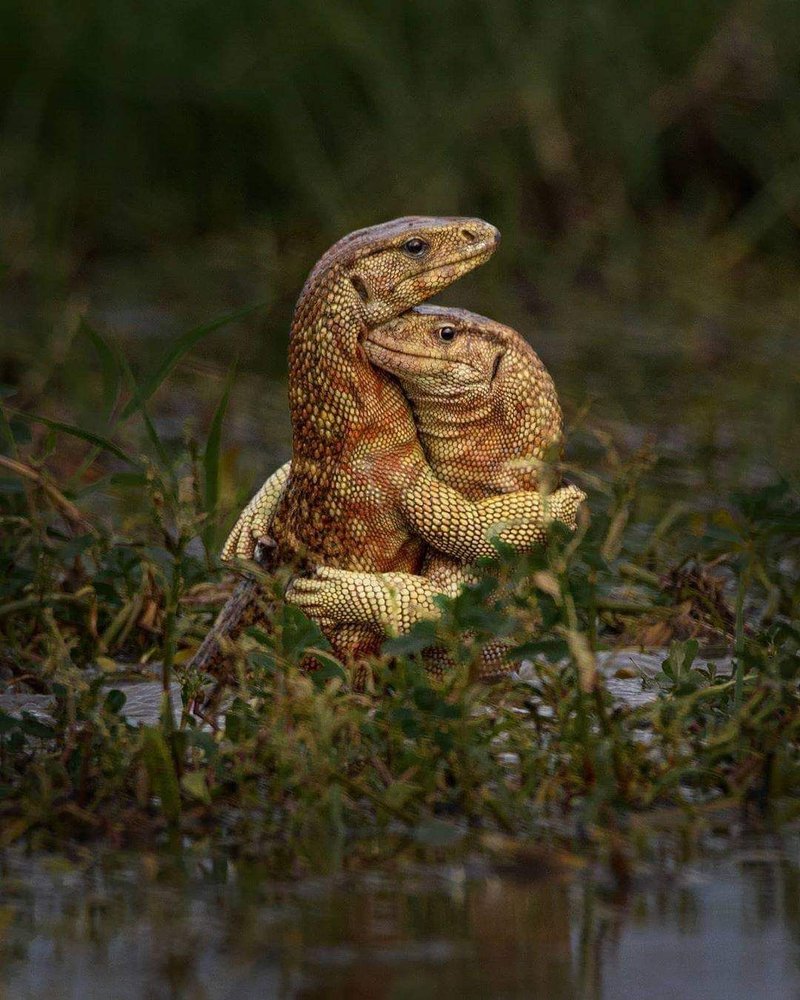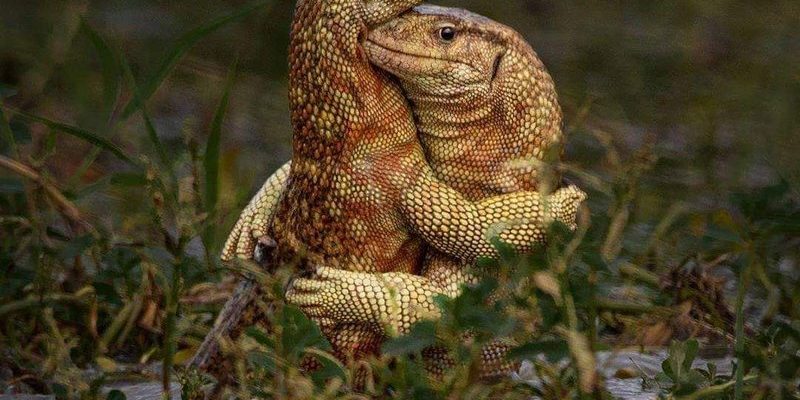
Just like how we might nurture our own kids, monitor lizards go through a process of laying eggs and, in some species, even taking care of them until they hatch. It’s a journey that involves finding the right nesting sites, protecting the eggs from predators, and sometimes even monitoring the hatchlings’ first steps. Let’s dive deeper and explore how these remarkable reptiles raise their young in the wild.
Understanding Monitor Lizards’ Parenting Style
Monitor lizards are often solitary creatures, but they shift gears when it comes to reproduction. They begin this critical phase by seeking a suitable mate. After mating, the female embarks on the next important task: laying her eggs. Most species lay anywhere from a handful to over a dozen eggs, depending on their size and species.
Here’s the thing: monitor lizards are quite selective about where they lay their eggs. They often choose warm, sandy sites or sometimes even decaying vegetation, which provides some warmth that helps incubate the eggs. Think of it as choosing a cozy blanket to keep their future babies comfy. After laying the eggs, the female usually leaves them to develop on their own. This might sound a bit cold, but it’s actually quite common among reptiles.
The Nesting Process
Nesting is a crucial part of a monitor lizard’s life cycle. After mating, females will scout for the best spots to lay their eggs. They often dig burrows or find crevices to protect the eggs from the harsh elements and potential predators.
In some species, the female might also bury her eggs under a layer of dirt or leaf litter, which helps regulate the temperature. This nesting strategy is important because it protects the eggs from extreme weather conditions and makes it more challenging for predators to find them. The incubation period usually lasts about two to three months, during which the female keeps an eye on the area, even though she doesn’t stay with the eggs.
Temperature and Egg Development
Temperature plays a vital role in the development of monitor lizard eggs. The warmer the environment, the faster the embryos develop. In fact, some researchers believe that temperature can even influence the sex of the hatchlings. For instance, higher temperatures might result in more males, while cooler temps lead to more females.
Picture this: if a female lizard lays her eggs in a cozy, sun-warmed spot, she’s increasing the chances of her hatchlings emerging healthy and strong. This connection between temperature and development highlights nature’s delicate balance.
Hatching and Independence
Once the eggs are ready to hatch, the baby monitor lizards use a special tooth called an egg tooth to break through the shell. It’s like they’re using a tiny tool to help them escape from their snug little homes. This hatching process usually happens simultaneously, which is pretty impressive.
After they’ve emerged, hatchlings are entirely on their own. They don’t receive any parental care—no guidance or protection from the female. Instead, they must quickly learn to fend for themselves. This can be tough, but it’s how nature ensures that only the strongest survive. Young monitor lizards tend to stay hidden in vegetation and hunt small insects or smaller animals to build their strength.
Survival Challenges for Hatchlings
The world is a dangerous place for tiny monitor lizards. Once they hatch, they face a variety of challenges. Predators, including birds, snakes, and even other lizards, see these little ones as a tasty snack. This is just one of the reasons why finding a good hiding spot quickly is critical for their survival.
Hatchlings often rely on camouflage and quick reflexes to escape from danger. They might take shelter under leaves or burrow into the ground. Unfortunately, not all hatchlings make it to adulthood, which is why monitor lizards lay so many eggs at once. It’s a numbers game, with only a few surviving to grow into adults.
Monitor Lizards: The Nurturing Side
While many monitor lizards leave their eggs to hatch on their own, some species show a surprising degree of care. The Komodo dragon, for example, is known to exhibit some maternal behaviors. After laying eggs, the female might stay nearby to ward off potential threats. This level of vigilance is a fascinating exception in the lizard world and highlights the variation in parenting styles among species.
Though these nurturing behaviors are less common, they reveal the complex relationships these reptiles have with their young. They’re not just instinct-driven machines; some monitor lizards showcase a deeper understanding of ensuring their lineage continues.
The Importance of Habitat for Raising Young
The habitat in which monitor lizards raise their young plays a significant role in their survival. Tropical and subtropical regions provide the ideal conditions for these reptiles. Plenty of vegetation offers hiding spots, while warm climates help with egg incubation.
Unfortunately, habitat destruction poses a threat to their populations. As humans encroach on these environments, monitor lizards face increasing challenges in finding suitable nesting sites. This is why conservation efforts are essential. Protecting their habitats can help ensure that future generations of monitor lizards continue to thrive in the wild.
Monitor lizards are truly fascinating creatures, especially when it comes to their parenting strategies. From how they select nesting sites to the challenges their young face, there’s so much to learn about these reptiles. It’s a story of survival, adaptation, and determination in an often harsh world.
Understanding how monitor lizards raise their young also reminds us of the delicate balance of nature and the importance of protecting their habitats. By appreciating these incredible animals and their unique life cycles, we can take steps to ensure their survival for generations to come.

